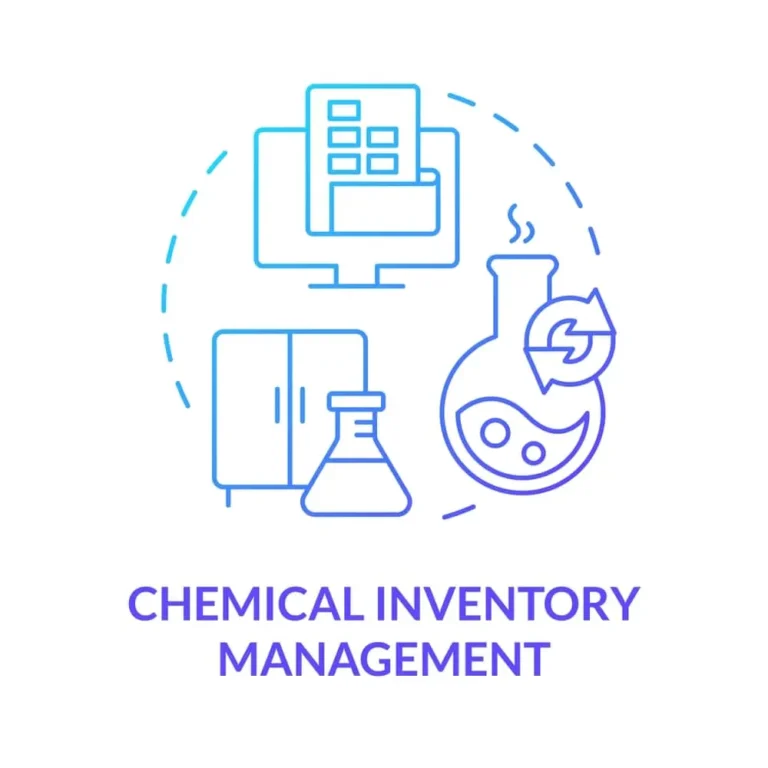If one is handling chemicals, it’s crucial to nail down the basics of inventory & storage to keep things safe & sound. Let’s break down how to manage your chemical inventory, organize storage, and ensure compliance with safety standards in a way that’s both practical & efficient. Chemical inventory and storage are crucial components of laboratory & industrial safety protocols.

Chemical Inventory: Keep It Up-to-Date
Stay Organized with a Database
First things first, you need a robust system to track all the chemicals you’ve got. A database is your best friend here. Keep tabs on quantities, storage locations, and essential safety data. An updated inventory helps you stay on top of what you have & what you need to restock.
Labeling is Key
Every chemical should be properly labelled. This means including the chemical names, hazard classifications, and expiration dates. Labels aren’t just for looks—they’re vital for safety.

Storage Classification: Preventing Dangerous Reactions
Group by Compatibility
To avoid any nasty reactions, store chemicals by compatibility groups. The Globally Harmonized System (GHS) or a similar classification system can help or guide you. This helps prevent accidental mixing of incompatible substances.
Segregate Wisely
Keep incompatible chemicals apart. Acids & bases, oxidizers & flammables—they all need their own space. This segregation is a fundamental safety practice.
Special Storage Needs
Some chemicals need special conditions, like refrigeration or an inert atmosphere. Identify these & make sure they get the storage they need to stay stable & safe.

Storage Locations: The Right Place for Everything
Primary Storage Areas
Designate primary storage areas for bulk chemicals and those reagents you use all the time. This keeps your workspace organized & efficient.
Secondary Storage and Containment
For hazardous liquids, use secondary containment like trays or cabinets. This extra layer of protection is crucial in preventing spills from becoming major incidents.
Ventilated Storage for Volatiles
Store volatile or toxic chemicals in ventilated cabinets. This minimizes exposure risks & helps maintain a safe environment.
Safe Storage for Flammables and Corrosives
Flammable chemicals need to be in approved storage cabinets, well away from any ignition sources. Similarly, acids and bases should go into corrosion-resistant cabinets to prevent any nasty reactions.

Safety and Compliance: Playing by the Rules
Meet Regulatory Standards
Make sure your storage practices are in line with local, national, and international regulations like those from OSHA, EPA, & NFPA. Compliance is not just about following the law; it’s about ensuring safety.
Keep Safety Data Sheets Accessible
Have Safety Data Sheets (SDS) handy for all chemicals. These sheets provide crucial information on handling, storage, and emergency measures.
Equipping for Emergencies
Your storage areas should be equipped with spill kits, eyewash stations, and fire extinguishers. Being prepared can make all the difference in an emergency.

Environmental Controls: Maintain Stability
Temperature and Humidity matter
Keep an eye on temperature & humidity levels. Proper environmental controls ensure chemical stability and prevent degradation.
Ventilation is Crucial
Good ventilation prevents the buildup of hazardous vapours. This is especially important in areas where volatile chemicals are stored or used.

Spill and Waste Management: Handling the Unexpected
Spill Response Plan
Develop a spill response plan & train your staff on it. Have spill-cleanup materials readily available. Being ready for a spill can prevent a minor accident from becoming a major disaster.
Proper Waste Disposal
Follow the right procedures for hazardous waste disposal. Label & store waste in designated areas to avoid any mix-ups or contamination.

Training and Documentation: Knowledge is Power
Regular Training Sessions
Provide regular training for lab personnel on chemical storage, handling, and emergency procedures. Well-trained staff are your first line of defence against accidents.
Keep Records
Document training sessions, inspections, and any incidents. This helps in keeping track of compliance & can be invaluable during audits or inspections.

Inspections and Audits: Stay on Top of Safety
Regular Inspections
Conduct regular inspections of your storage areas to ensure everything complies & to identify any potential hazards. This proactive approach can catch problems before they escalate.
Audit Your Practices
Periodically audit your chemical storage practices against regulatory standards & best practices. This helps in maintaining high safety standards.

Organization and Accessibility: Efficiency Meets Safety
Clear Labeling
Label storage areas and shelves clearly. This makes it easy to identify & retrieve chemicals quickly, which is crucial in a busy lab environment.
Easy Access
Arrange your storage so that frequently used chemicals are easily accessible. This not only enhances efficiency but also maintains safety.

Emergency Planning: Be Ready for Anything
Emergency Contact Information
Post emergency contact information in visible locations. In a crisis, quick access to this information is vital.
Evacuation Plans
Develop and practice evacuation plans for chemical spills or other emergencies. Knowing what to do & where to go can save lives.

Example Layout Plan: A Practical Guide
Chemical Storage Room Layout
- Entry Area: Post emergency contact info, the spill response plan, and an SDS binder here.
- Flammable Storage Cabinet: Use an approved cabinet for flammable liquids.
- Corrosive Storage Cabinet: Store acids and bases in a corrosion-resistant cabinet.
- Ventilated Storage: Have cabinets with local exhaust ventilation for volatile chemicals.
- General Storage Shelves:
- Top shelves for non-hazardous, non-volatile solids.
- Middle shelves for less hazardous liquids.
- Bottom shelves for heavy or bulk containers in secondary containment trays.
- Refrigerator: For chemicals requiring cold storage, clearly labelled & segregated.
- Spill Kit Station: Keep spill cleanup materials easily accessible.
Conclusion: Stay Safe and Compliant
in summary, chemical inventory and storage not only enhance workplace safety and regulatory compliance but also safeguard personnel & the environment from potential risks associated with chemical handling. A well-organized chemical storage plan enhances safety and efficiency in your lab. Regular reviews & updates to your plan ensure ongoing compliance & protection for your lab personnel and the environment. By following these guidelines, you can create a safer, more efficient workspace. Stay safe out there!

